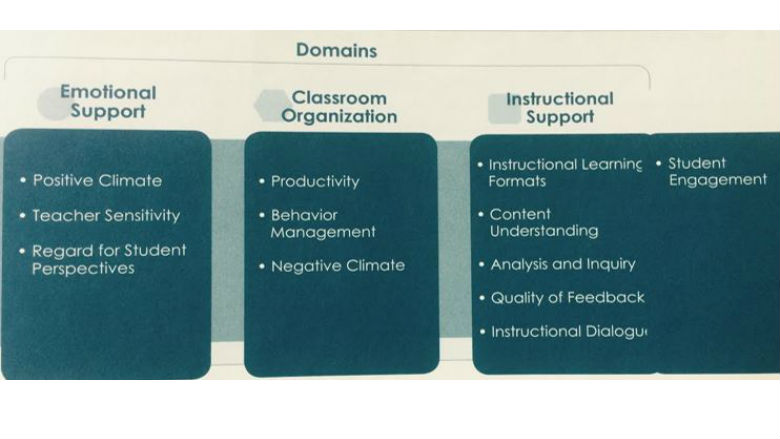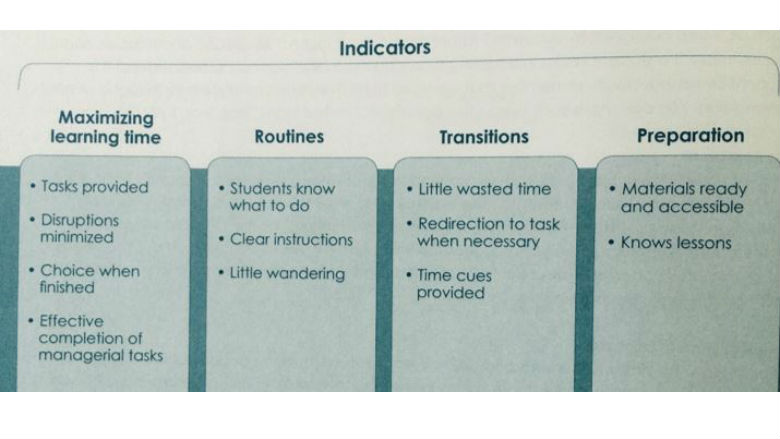What is it?
The Classroom Assessment Scoring System, developed by Robert Pianta at the University of Virginia is a tool for analyzing the quality of teacher-student interactions in the classroom. It produces qualitative ratings of teacher performance on a scale from 1-7 across three broad domains: emotional support, classroom organization, and instructional support.
What does it measure?
The CLASS instrument defines 11 specific dimensions underlying the three domains (Figure 1). A 12th dimension measured in CLASS observations is “student engagement”, measured by observing the students. Each dimension is rated on a scale of 1-7.

How does it work?
CLASS observers typically select two 20-25 minute segments of the class to apply the instrument. During those periods, they follow rubrics that guide them to look for very specific behaviors in each dimension. Figure 2 provides an example of the specific guidance for one dimension, the “productivity” dimension of the classroom organization domain.
For each behavior, the CLASS protocol gives coders concrete guidance on whether the score given should be “low” (scores of 1-2), “medium” (scores of 3-5), or “high” (scores of 6-7). Thus, each teacher receives domain scores as well as an overall score on a scale of 1-7. Pianta’s research and other applications have found that scores across the three dimensions are highly correlated (Pianta, Hamre & Mintz, 2012).

How much does it cost?
The advantage of the CLASS instrument over the Stallings method is that CLASS generates a more complete assessment of teacher performance. CLASS captures key dimensions of teacher quality such as teachers’ content mastery and the quality of teachers’ feedback and questions to students that cannot be measured by Stallings. As a result, CLASS is more appropriate for evaluations of teacher performance that have stakes for teachers’ careers.
But a very high level of sophistication and training is required to produce observers capable of making consistent qualitative judgements using CLASS. This has limited its use in developing country research settings. In such settings, it is usually impossible to train a sufficient number of observers to carry out live observations of teachers; instead, teachers are videotaped by professional videographers and the tapes are subsequently coded by a small team of highly-trained experts. This increases the costs of conducting CLASS observations. In a recent study in Chile, videography costs were on the order of $100 per classroom. However, videotaped observations have several advantages, including the possibility of multiple coding to increase reliability, and downstream use of the videos for teacher training or other analysis.
More information about CLASS is available here.
How consistent are Stallings and CLASS observations?
One of the CLASS domains – classroom organization – overlaps with the teacher behaviors measured by Stallings. How consistent are they? A research study comparing Stallings and CLASS measures for a sample of teachers in Chile found that the two instruments were well correlated in the area of overlap.
Where has it been used?
Chile
Ecuador
The Quality of Centros Infantiles del Buen Vivir in Ecuador, IDB Policy Brief
Teacher Quality and Learning Outcomes in Kindergarten, The Quarterly Journal of Economics
Published: October 2017
